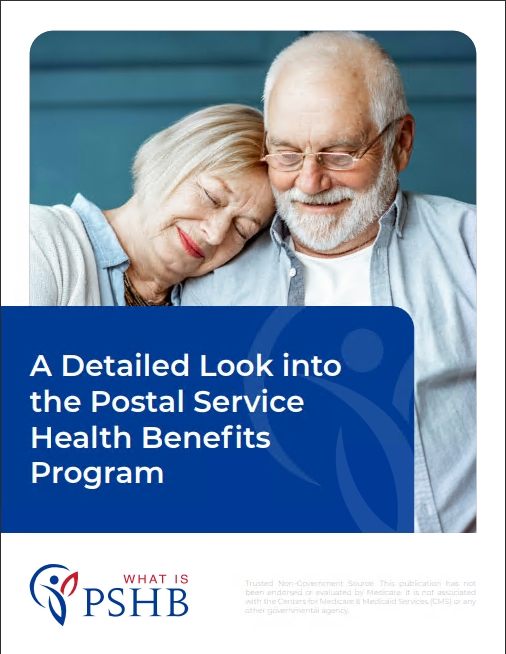Key Takeaways:
-
The Postal Service Health Benefits (PSHB) program offers essential coverage tailored specifically for USPS employees and retirees, ensuring access to comprehensive healthcare options.
-
Understanding PSHB’s key features, including enrollment requirements, cost-sharing details, and Medicare integration, helps you make informed healthcare decisions.
What Makes PSHB Different from FEHB?
If you’ve been covered under the Federal Employees Health Benefits (FEHB) Program, you might be wondering how the new Postal Service Health Benefits (PSHB) program compares. As of January 1, 2025, all eligible USPS employees, retirees, and their dependents must be enrolled in a PSHB plan for continued coverage.
Unlike FEHB, PSHB is specifically designed to meet the healthcare needs of postal workers, offering plans with tailored benefits, cost structures, and enrollment requirements. The government still covers a significant portion of premium costs, but plan details, including deductibles, copayments, and coinsurance, vary.
1. Enrollment is Mandatory for Continued Coverage
The biggest change is that USPS employees and retirees must enroll in PSHB to maintain health coverage. Unlike FEHB, which covered both postal and non-postal federal workers, PSHB is exclusive to USPS employees, retirees, and their eligible family members.
Who Must Enroll?
-
Current Employees: If you’re a USPS employee, you must switch to a PSHB plan during Open Season or after a qualifying life event.
-
Retirees: If you retired before January 1, 2025, you may be eligible to remain in your FEHB plan, but enrolling in PSHB is encouraged.
-
Medicare-Eligible Retirees: If you qualify for Medicare and retire on or after January 1, 2025, you must enroll in Medicare Part B to maintain PSHB coverage.
If you don’t actively enroll during the Open Season (November 11 to December 13, 2025), you’ll be automatically placed in a plan that closely matches your current FEHB coverage. However, it’s always best to review options to ensure the plan meets your needs.
2. PSHB Works in Coordination with Medicare
If you’re a retiree aged 65 or older, integrating PSHB with Medicare Part B can provide better coverage and reduce out-of-pocket expenses. In most cases, enrolling in Medicare Part B alongside a PSHB plan results in lower copayments and waived deductibles.
How Does It Benefit You?
-
Lower Out-of-Pocket Costs: Many PSHB plans waive certain deductibles and copayments when Medicare Part B is also active.
-
Prescription Drug Coverage: PSHB plans automatically enroll eligible retirees in a Medicare Part D Employer Group Waiver Plan (EGWP), ensuring comprehensive drug coverage.
-
Medicare Part B Requirement: If you retire on or after January 1, 2025, and are eligible for Medicare, you must enroll in Part B to keep PSHB coverage.
3. Cost-Sharing: What You Pay vs. What’s Covered
While the government continues to pay a portion of your premiums, you’ll still have some cost-sharing responsibilities.
Breaking Down the Costs
-
Premiums: Monthly costs depend on your plan type—Self Only, Self Plus One, or Self & Family.
-
Deductibles: Some plans have low deductibles, while high-deductible plans allow Health Savings Account (HSA) contributions.
-
Copayments & Coinsurance: Primary care visits, specialist appointments, and hospital stays may have copays or coinsurance, which vary by plan.
-
Out-of-Pocket Maximums: These caps protect you from excessive medical expenses each year.
Reviewing your plan’s cost-sharing details ensures you choose a PSHB plan that aligns with your healthcare needs and budget.
4. Open Season is Your Only Opportunity to Switch Plans
PSHB follows the same annual Open Season as FEHB, running from November 11 to December 13, 2025. Unless you experience a qualifying life event (QLE), this is your only chance to enroll in a new plan, switch coverage levels, or adjust your benefits.
What You Can Do During Open Season:
-
Change Plans: Compare different PSHB options to find the best fit for your needs.
-
Modify Coverage Level: Switch between Self Only, Self Plus One, or Self & Family.
-
Enroll in or Drop Coverage: Make necessary changes to your health plan.
If you don’t make any changes, you’ll be automatically re-enrolled in a plan similar to your current FEHB coverage.
5. PSHB Includes Nationwide and Regional Plan Options
PSHB offers a variety of plans to accommodate different healthcare needs. Whether you prefer a nationwide plan with a broad provider network or a regional option tailored to specific areas, PSHB ensures flexibility in coverage.
Plan Options Available:
-
Nationwide Plans: Ideal if you want a consistent provider network regardless of location.
-
Regional Plans: Designed for those who prefer localized networks with potentially lower costs.
-
High-Deductible Health Plans (HDHPs): Allow contributions to an HSA for long-term savings on healthcare expenses.
-
Standard and Basic Options: Different levels of coverage based on your healthcare usage and budget.
Choosing the right plan involves considering factors like provider access, prescription drug coverage, and out-of-pocket costs.
Making the Most of Your PSHB Benefits
To get the most from your PSHB coverage, take time to review plan details and make informed decisions:
-
Understand Your Cost Responsibilities: Review premiums, deductibles, and cost-sharing details.
-
Check Provider Networks: Ensure your preferred doctors and hospitals accept your PSHB plan.
-
Coordinate with Medicare: If you’re eligible, enrolling in Medicare Part B can enhance your benefits and lower costs.
-
Review During Open Season: Always check for updates or changes in coverage and benefits each year.
Taking a proactive approach ensures you maximize your benefits and avoid unexpected healthcare costs.
Get Expert Help with Your PSHB Enrollment
Choosing the right PSHB plan can be complex, but you don’t have to figure it out alone. To explore your options and make the best decision for your healthcare needs, get in touch with a licensed agent listed on this website. They can help you compare plans, understand cost structures, and ensure you’re getting the best coverage for your situation.











